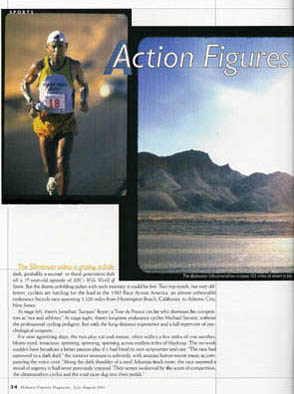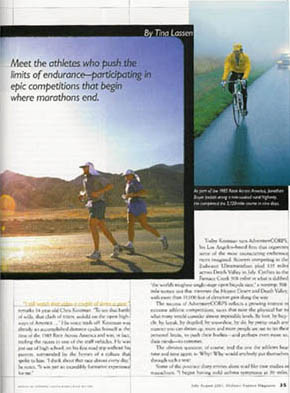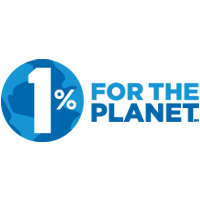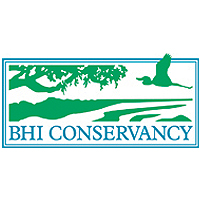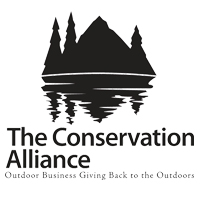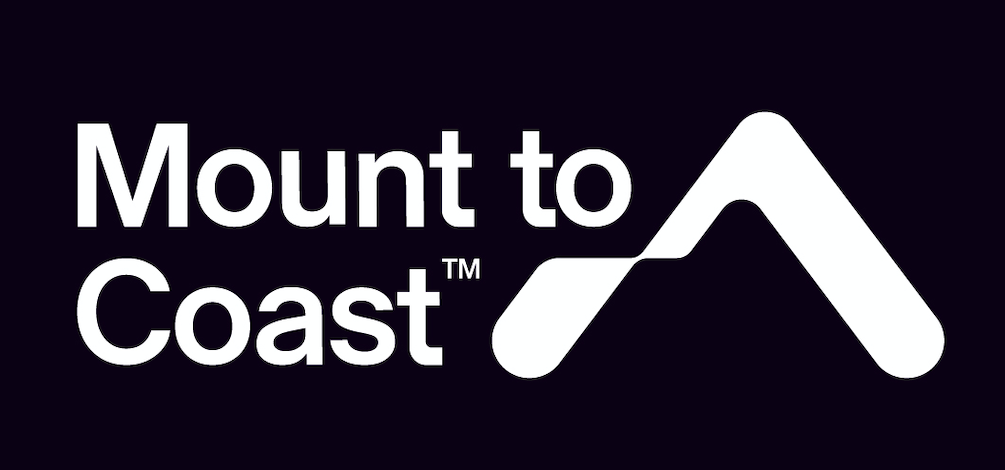“Ladies and gentleman, please return to your seats and fasten your seatbelts. Bring your chairs to a full upright position and stow any items under the seat in front of you, as we prepare for our landing in Dallas.” It was the standard end to an uneventful and smooth air ride. I had awakened with a start, not realizing that I had nodded off during the trip from Vegas back home. This was the end of an adventure. An amazingly wonderful adventure, which had brought me together with an old friend and into contact with several new. It’s sometimes hard to recall what seems like a year’s worth of living packed into a week’s worth of time. But here goes.
Last year, when I had to take a pass on Steven Silver’s invite to crew and pace as he attempted his 4th Badwater to Mt. Whitney trek, I felt as if I had let him down. Sure, I had a valid excuse (work duties in Mexico City) but I couldn’t help but feel like I had really missed out. This time was going to be different. Come hell or high water I was prepared and determined to be there.
The thing I was struck most by, was how different than other ultras Badwater is. Planning and team reliance are the most critical necessities and absolutely make the difference between finish or failure. The crew has to be “rolling aid-station” with several points where ice and other perishable need to be replenished. This requires realistic planning and experience. Luckily, we had Jim Wolff as our crew chief who has all the experience in the world. Jim’s taciturn pragmatism was the “steady-hand” for the group. He knows what to do and when to do it. That counts for everything out on the Badwater course. Most importantly, Jim has played this fiddle before and as recent as last year, crewed Steven to a great finish.
I could include a lot of cute crap about the pre-race, I guess but I’ll skip that. Mostly, everyone just wanted to get to the run. The three different start times are something you don’t see in many races. Everyone is racing against the clock, of course. Start times are six, eight and ten am. Steven had the ten o’clock start, which I think is the best start time. 1) You can sleep a little later and have breakfast before it’s time to run. 2) Since you start later after sunrise, you therefore have 2/4 hours less of sun on the first day. 3) You can always draw positive power by closing on teams that you are gaining on from the earlier starts. And finally past track record. Steven’s best time in the past came on his only other 10:00 start. (about 34 hours)
So most of the ten o’clock wave get down to the start by around 9:30 am. This is about 17 miles back into Death Valley away from Furnace Creek Ranch. The race comes straight back up this road and F.C. is the #1 checkpoint. We, in fact, got to see some of the 6:00 runners come back by the first checkpoint before we left to go to the starting line. The ten o’clock star time finally comes and the runners move down the road toward their destiny.
Here again, is where you are reminded that this isn’t like other races. Even though there are only 30 or so runners in each wave, this also provides for 30+ crew vehicles and here is where the reason for the wave start is obvious. There is limited suitable shoulder on a good portion of this course. Seventy-something runners with support could make for a dangerous beginning. A large size van is preferable and make sure that it handle the heat. White/verylight color and HD cooling is best. And be aware that there are substantial mountains that will require some driving in low gears. The vehicle needs to be able to take it. Ours was a full size Chevy and held up fine. Be sure and watch your water gauge though.
Lovely Laura Bernal was the flower of our group and the day before the start she let it be known that she wanted to start the day as Seven’s first pacer. She is also from El Paso (Steven home) and a good friend and running partner of SS’s. Steve James, a 3:15 marathoner from California who has been climbing mountains and sauntering up switchbacks since grade school was our third pacer/crew member. Steve’s strong suits are his unending positive attitude and enthusiasm. Finally, there was me. (Blade) I was there to help dispense with the whining when things got tough. My creative skills at foot surgery and damage control would also end up being required on the second day.
Off the runners go,It was about 106 degrees at the start and the terrain of Badwater looks like something from another planet. Think about the photos from Mars, which Voyager sent back and it will give you an idea. We would drive ahead about a mile and then pull off on the side of the road. As Steven and Laura would approach, it was time to prep water bottles and get out the squirt guns. We worked from the back of the van and after two or three stops, started to get the routine down. As the pair would come up Steve, Jim and I would give them fresh liquids, spray them off with cool water and offer food and encouragement. Then it’s back in the van, drive ahead another mile and repeat. This was going to become the natural flow. It’s like eating an elephant sandwich, you have to take it one bite at a time.
After about 5 miles Steven was starting to get into his groove and making steady progress. Laura was looking pretty red-faced and it was time for a pacer swap. We had talked beforehand about out pacer strategy. It was agreed that we would need to swap regularly to try and keep the pacer as fresh as possible. I knew that on the second day when things got tough, this would help everyone. Steve J. took over next and we continued on. Drive about a mile and stop. Spray down the runners and change out their bottles. Drive another mile and stop. Spray down the runners/change water/offer munchies. Getting the idea? It seemed as if the hose downs were needed as much as the fresh water bottles. It was so dry and so hot that water would evaporate almost immediately, once sprayed on the runners. By the time we were approaching Furnace Creek again, (Checkpoint #1) we had made at least 15 stops. The digital thermometer of the van was showing 117 and now it was time for Steve J. to swap out. This was also to be our first ice stop.
Steven checked into the #1 station at 12:49 pm and we got a chair out for him to take a quick break. Meanwhile, Jim headed into the General store of F.C. to get a few more bags of ice. I was to take over as pacer at this point and in about 10 minutes we were on the road again. For the next 2+ hours we made steady progress toward Stovepipe Wells, the next check station. Jim wanted to get a little action, so he took a short turn out on the road and then it was back to Laura’s turn. Then I believe it was back to Steve J. The rotation strategy seemed to be working well.
Along this stretch into Stovepipe, we gained upon several teams from the earlier starts. At 6:45 in the afternoon we came into Stovepipe where there is a store, gas station and motel with a small pool. I got out and refueled the van while Jim got more ice. Laura went with Steven over to the pool to sit down and cool off (?) for a minute. I was going to take the next leg and likewise went over to the pool to jump in and out quickly. There were several participants catching a break at this point. This is also the point where people have been going all day and begin to start dropping. As I walked up to the pool, I could see Major Maples sitting by the pool with his legs in the water. He had a bucket and was puking with great purpose. His race was done. Others sat in pool chairs with a comatose look on there faces. Reality was now setting in. Some would get up and some would not. Probably 9 or 10 runners wouldn’t continue past Stovepipe.
Laura worked on Steven with a massage stick for 15 minutes, or so and I think we left Stovepipe about ten after 7 pm. The sun was waning now, but it was still 116. Another change was to take shape now, because shortly out of Stovepipe Wells begins a long climb to Towns Pass at 5,000 ft. It would be dark for quite some time when we got to the top of Town Pass. As we moved into the night we caught up to other groups, including Art Webb, Shannon Farar-Greifer, the legend Marshall Ulrich (who was on the third of four crossings) and Chris Moon. Chris was sporting a new leg this year (I believe) and he was looking good.
Steve took over for me somewhere going up to Townes Pass and Laura wanted to take over after we headed down the backside. The top of Townes pass was another popular place to take a mental and physical break for the runners but our team resisted the temptation and continued on after a brief stop. Steven was starting to hit his first real “bad patch” and felt as if he needed to puke. Laura was able to pick up his spirits some though and a Zenadrine capsule helped him shake off the drowsiness. As I took over after Laura/Steve J, I could tell that we were beginning to loose focus. Steven was whining bad now, and saying that he couldn’t run anymore and there was still half way to go. (the tough half) I got in his face and told him that there was no way I was going to let him quit and to shut up and take the pain. I knew that when the next morning dawned, things would get better. We needed to focus on Panamint Springs (the next checkpoint) We walked through the darkness painfully moving toward Panamint. I told Steven to go ahead and try to puke. Dry heaves was all he could muster but it helped some and gradually his stomach settled down. Now the main problem was that the desire to sleep was the main bear on his back. A couple of times we had to stop and Steven would lie down on the side of the road for a minute. I would help him back up and we continued on.
Finally, finally, finally we came to Panamint Springs. (Checkpoint #3) There is a guesthouse there and Laura took Steven in and we decided to let him have a 30-minute nap. It was 4:45 am now and daybreak would be here soon. Jim and Steve took care of ice and supply duties again and I jumped in a shower that was available here and changed clothes. I still had not gotten sleepy yet and knew that the next section would be tough going, despite the new day. It’s up a very steep mountain now to Father Crowley’s Peak and power walking on this section was the prudent choice.
We left Panamint about 5:20 am. The nap and sunlight did indeed help and Steven was talking positively now and we gained on a couple of other people as we went up the mountain. Paul Stone was the only one that passed us going up this section and he was looking great. Paul would finish in 37 hours, this year and after the race he told me that he had really worked hard this season on power walking. It was obvious that it paid off considering his fine finish and the fact that he took a mind-numbing 15 hours off his time from last year.
Anyway, it was up to Crowley’s point and time for another pacer switch. I think it was back to Steve James this time. The road levels off somewhat after Crowley, and the next checkpoint comes at Darwin’s Cutoff near 90 miles. Jim took another turn somewhere along here and soon we had Darwin in sight. We made the Darwin check point shortly before 11:00 am, but Steven’s resolve was wearing thin again and at the check point Laura went to work again with the massage stick. Steve J. took over after we left Darwin but it was getting really tough now. Steven’s feet were in bad shape and it was obvious extreme measure would be required.
At one point as we looked back from the van (Jim, Laura and myself) we saw the two S’s stop. They were about 400 meters back from the vehicle. Steve James came jogging up and told us that Steven couldn’t make it and to turn around and go back. We did and got Steven inside the van with the side door open. His feet were toast and with great agony we got his left shoe and sock off. “Blade, you’re going to have to work on my foot, It’s fuckin killing me!” he pleaded. I got out my bag with the necessary implements and Laura laid him back and held him down. There was a huge area of “hot spot” on the ball of his foot and the little toe and outside of his foot was a blistered, bloody mess. “We’re going to have to drain this, moleskin it
and tape it up” I informed him. “It’s gonna hurt, so get ready to suck it up.” I took a needle and pierced several places so that the blood and “clear-juice” could drain out. I could say he bitched and cried like a pussy, but the truth is that this hurt badly and anyone would have screamed. Laura did a good job of keeping him down while I worked. After the draining and squeezing and cleaning, it was time for the spray and moleskin. I covered the ball of his foot with the moleskin and taped up the big toe/little toe which were mostly hamburger by now. Back on with a fresh sock and Presto-Chango, good as new! (Well, not exactly) Now all that was required was to cut the side of his shoe out, so as to provide more room for his swollen forefoot. We got the shoe back on and gingerly he and Laura began walking. We moved the van up a few hundred meters and stopped to see if things were going to be better now. This did indeed, relieve the pain/pressure and soon Steven began a bastardized jogging shuffle.
Once you are past Darwin at 90 miles, you can see the Serria Mountains off in the distance. This is good and bad because it gives the runner hope that the end is out there somewhere but you can see it for such a long time that it begins to feel as if you’ll never reach it. I took a turn again pacing and things were going somewhat better for Steven. As we neared a pass into Owens valley Jim commented on the low ice situation.
“We’re going to have to drive on ahead to Lone Pine and get some more” was his assessment. We got out a couple of bottle belts and filled up with the last of the ice. “We’re going to haul ass to Lone Pine now and then we’ll be back” Jim stated.
“It will probably take about an hour”
“OK, Jim, make it as quick as you can though” I emphasized. “Things are all right for now, but I don’t want our asses hanging out for any longer than need be”
He acknowledged and the three of them drove off to get ice. Even though the foot situation was greatly improved, Steven and I decided to walk exclusively now until the van returned. Better to save energy and water at this point. We moved down a slight hill and into Owens Valley. This is somewhere past 100 miles and it was maybe two o’clock.
Right about an hour, our cavalry returned and they were a welcome sight. I think we took a short beak here, as the great desire to sleep was hitting Steven again. 10 minutes is all that we would let Steven take, because if you go down for too long at this point it can be counterproductive. His other foot was needing attention by now and I cut up another sacrificial shoe in an appropriate fashion. Steve and Laura took their turns pacing again. We were now less than a marathon from Lone Pine and could see Keeler in the distance.
Minute after agonizing minute, steady progress was made. Art Webb, whom we hadn’t seen since leaving Panamint, caught up with us and this gave Steven a mental lift. Art said he was going to take a break at Keeler and jump in the water tub there. He in fact, did and Steven continued past. Lone Pine was in sight now. I kept telling everyone that we were going to make it and we all knew it was true. There was no doubt now. We still had to get into Lone Pine and make it up Whitney but everyone could smell the barn. As the second nightfall was coming on we were about 3 miles from the Hwy 190/136 junction. This is just outside Lone Pine. There is also a small creek here with a bridge across it and there is actually a green area with vegetation by this creek. The van pulled up just past the bridge for our next stop. Laura was taking her turn with Steven and they stopped at the back of the vehicle. Laura got a tuna fish packet out of one of the coolers and opened it to eat some. Suddenly something was wrong, very, very wrong. In an instant mosquitoes were everywhere. (They had come from the creek) This was the only water for miles in this godforsaken wasteland and the smell of the tuna had set these bloodsuckers on us with a vengeance. And we had no type of repellent onboard, who would have thought! Steven and Laura started slapping and running away from the creek and I yelled to Jim and Steve “Let’s get the hell up to the Chevron station and get some bug spray!” We jumped back in the van and Jim floored it to get to the gas station, which was now just a couple of miles ahead. While he drove, I got some money out of the glove box and we pulled into the Chevron. I barely waited for the van to stop as I jumped out and ran inside. Praise Jesus! They had “Deep Woods Off” on the shelf straight ahead and I grabbed a can. I tossed the cashier the money (not even waiting for the change) and was quickly back out in the parking lot where Jim was turning around. We were back in a couple of minutes and Laura and Steven were still running and swatting. I got out and hollered “Cover your eyes, guys!” and proceeded to spray the pair up one side and down the other. Steve, Jim and I also coated ourselves and the onslaught subsided.
With this latest challenge dealt with, Lone Pine was closer than ever. It was dark now and we put on our reflectors and got out the flashlights. Steven expressed a desire for a hamburger from the restaurant in town so Jim and Laura jumped back in the van and they took off to have the food ready and waiting by the time we got into town. We came into Lone Pine shortly before 10 pm and Steven checked in at the #5 time station. I went across the street to the Portal Motel to check into the room that would be our quarters, once we had come back down from the mountain. Steven went into the burger joint for his dinner. Laura had also prepared Peanut butter and Jelly sandwiches for Steve James and I and we scarfed them down in the parking lot. We were all ready now for the assault on Mt. Whitney. It’s a road all the way up to the finish at the Whitney portals. An unrelenting 13-mile long uphill with two main switchbacks. Steven wanted to get this over with in the worst way and Jim figured we could be to the finish in another 4 hours. Steve James and Jim both, know this mountain like the back of their hand so we proceeded uphill keeping our flashlights off most of the time. As we progressed further and further the temperature dropped. After two days in the desert the trees on the mountain loomed like surreal giants and I could hear a fast moving river off the side of the road. We tried to distract ourselves from these final few arduous hours of climb by playing mind games like “Where do you think such-n-such is now?” and “guess how many calories we’ve burned”.
During the dinner stop in Lone Pine Art Webb and company had passed us back and were just ahead on the final miles. We were gaining back on Art though and word came down from his crew that Art wanted Steven to pick it up so that they could finish together again. The emotions and endorphins began to kick in as both Art and Steven knew that this would be their last time for this monster of a run. With less than a mile to go, the “Art brigade” came into view. It was a chilly 50 degrees now and everyone began running. I hoped in the van and Jim sped us past to the finish line. I got out with my camera and began snapping pictures as Steven approached with Art waving an American flag. They crossed the finish in 40:19:58 and everyone joined in a celebration as Art and Steven relished their victory over the Badwater demons for the 5th and final time. The pain and personal sacrifice was over. This is what Ultrarunning is truly all about.
(editorial note: Both Steven and Arthur returned the next year…)



